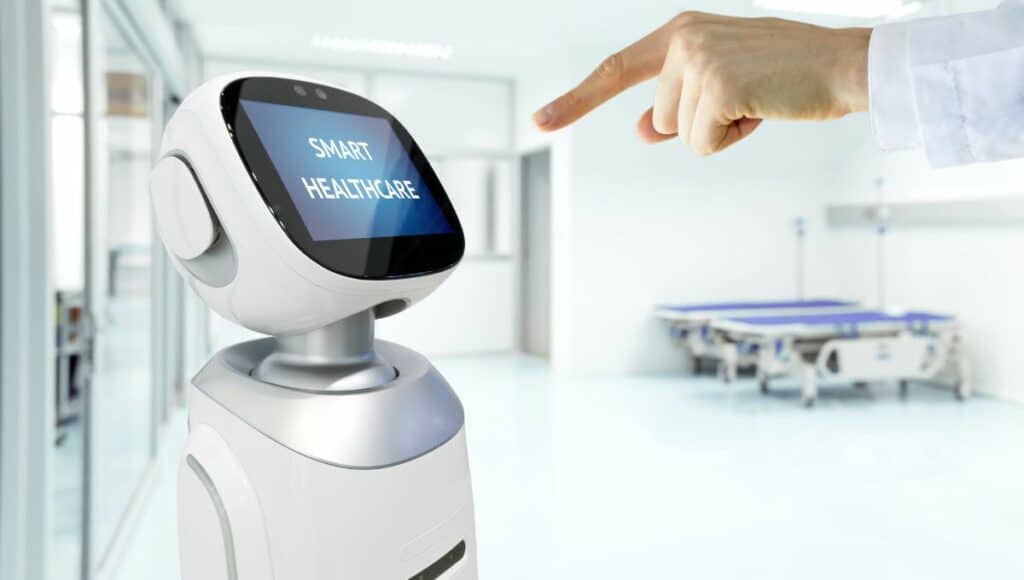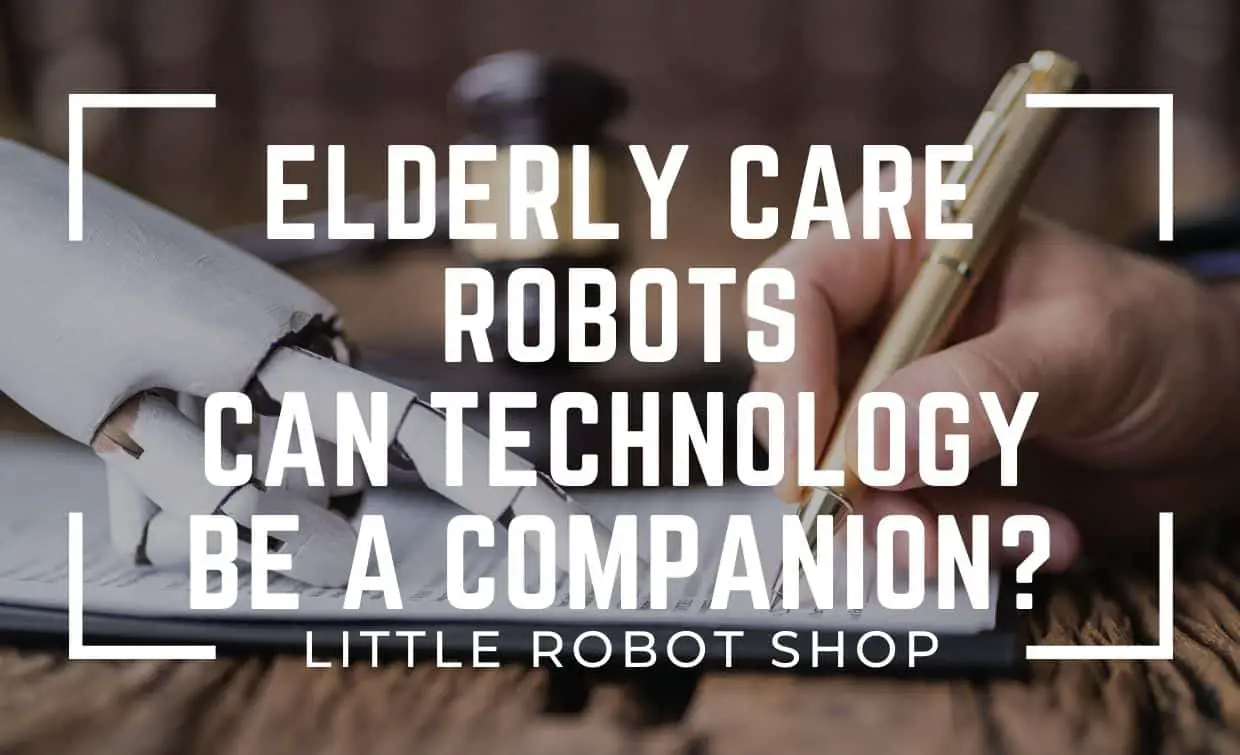The idea that senior citizens don’t understand technology is outdated and incorrect. Elderly care robots are versatile assistants for senior citizens. Whether you are curious about a robot companion for elderly individuals or a robot assistant for elderly parents, you may be surprised by what modern technology can do to make the lives of senior citizens easier.
This article will try to answer a simple question: can technology be a companion for senior citizens? The answer is “yes,” but also, “there’s more.” From standard care duties to emotional fulfillment, robot companions can be a boon for an aging population. If you or someone you know could use a robot buddy for their place, keep reading.
Can Technology Be a Companion for Senior Citizens?
The ratio of seniors to people willing to take care of them is getting worse around the world, especially in places like Japan. According to Statista.com, over 28% of Japan’s population was age 65 or older in 2021. But Japan is also at the forefront of robotics and has designed many ways to make eldercare easier with new systems.
Eldercare facilities now have a number of products to choose from to improve their residents’ quality of life. The Buddy robots are probably the most affordable example of companion robots for seniors stuck in one place. Considering that 25% of the U.S. population will be 65+ in 2030, maybe more people should look into mechanical assistants.

What Does A Companion Robot Need to Do?
Robots can already do basic tasks such as cleaning, giving food and water, and reminding aging citizens to take their meds. But for a robot to be a companion, it must be capable of complex social interaction. For that, a companion robot needs a good AI. Some care robots can even speak multiple languages!
A companion robot also needs to be able to emote to generate the proper responses. Modern screens and UIs make the necessary expressions easier. Even though people can project anthropomorphic features onto a machine, it is easier to connect with if a robot has eyes and a mouth. This also holds for robots that look like cute animals instead of humans. If made properly, a companion robot can reduce loneliness, anxiety, and depression.
Other features, such as games and the ability to contact family members, are also desirable for robotic companions. The best companion machines can turn off lights and adjust the temperature. An aging citizen can have their life improved with one machine.
How Can Robots Improve the Lives of Aging Citizens? (5 Ways)
1. Basic Companionship
The broadest point is, unfortunately, the most complicated. There have been concerns about whether a robot buddy can handle the full emotional spectrum of human connection. But projection is powerful; everybody has yelled at technology at least once for a sense of psychological satisfaction, even though we know it will not respond. Why not offer nursing home residents a robot companion?
Dublin College came up with Stevie the Robot (and his successor, Stevie II). Stevie the Robot can help fill the social void in elderly nursing home patients—especially at night when nursing homes are short-staffed. His expressive face and simple but effective design can provide social interaction for seniors. His artificial intelligence is sophisticated enough to make conversation and tell jokes.
Stevie can also interface with technology, including adjusting lights, regulating temperature, and calling loved ones. Many aging people don’t mind letting a machine do tasks that require minimal interaction. According to this article in Nature, even seniors who were not tech-savvy spent around 3 hours with the companion robot.
The positive effects of a robot buddy are not limited to robots that look like people. The Japanese robot PARO is designed after a baby harp seal. It makes noises like a seal pup, but learns its name, responds to voice and touch, and goes to sleep at night. Similar cat and dog therapy robots, such as these from Joy For All, have surfaced since PARO and have comparable benefits.
Many benefits of a therapy pet (including relieving anxiety and increased sociability) can be replicated through cute, cuddly, intelligent companion robots like PARO. PARO has even calmed down people with dementia who would otherwise warrant sedation or restraint.
2. Handling Household Tasks
As people age, chores such as vacuuming get significantly more difficult. Machines can handle many menial chores; for example, there are a number of good robotic vacuums for the elderly on the market. Simple tasks that have robot solutions should probably be outsourced to machines for the aging population.
Here are a few other chores that you can buy a robot for:
- Mowing the lawn.
- Cleaning a pool.
- Cleaning windows.
- Mopping.
- Washing items such as clothing and jewelry.
One does not have to be a patient in a retirement home for a robot to have a positive impact. Many houses and facilities around the world have machines doing their dirty work. Whatever sort of place an older person happens to be living in, it could probably use a mechanical assistant to make daily life easier and more pleasant.
3. Medication Reminders
Seniors frequently have issues remembering things, including when to take their medications. It is very easy to program a robot to tell an elderly person when to take their pills or do other jobs that they may have forgotten. Many companion robots for the elderly come with this feature.
4. Nursing Home Play
Some robots can play games with seniors, maintaining mental health and relieving stress. Robots with advanced communication technology like Stevie, for example, play trivia games with the residents. Patients with mental disorders may also show improvements after playing a few rounds.
5. Physical Aid
Certain eldercare robots can literally do the heavy lifting for seniors with disabilities, from carrying food and water to helping the elderly walk. The Japanese care robot RoBear can even lift people out of bed and into vehicles. You could say it’s smarter (and stronger) than the average bear!
There are more benefits where those came from. A robot may not be able to replace all aspects of human interaction, but it can still make an aging person’s life a lot easier and provide emotional support. Many researchers see robots as a supplement to human caregivers rather than a replacement.
FAQs
Can Robots Take Care of the Elderly?
The short answer is yes, robots can take care of aging individuals—especially when it comes to necessities like food, water, and medication. Other robots can perform chores on their behalf and put them in contact with a family member. With tech getting better every day, these machines can provide companionship where there wouldn’t be any otherwise.
Are There Robot Caregivers?
There are many robots designed to be caregivers for the elderly. One of the first was Care-O-bot, whose history dates back to 1998. The most refined, modern version of Care-O-bot was made in 2015. Other examples of robot caregivers include Stevie II, RoBear, Buddy, and more. In the future, expect to see even more robot caregivers as the issue of aging populations becomes more drastic—and as the technology to program and make them becomes more accessible.
What Are Three Ways Robots Could Help the Elderly?
Robots can provide many services to the elderly. These include:
◼ Companionship. Some robots can tell jokes and carry on conversations.
◼ Doing simple jobs such as delivering food, water, and medication.
◼ Providing physical and mental healthcare services, even for severe cases of Alzheimer’s disease and dementia.
There are even more things that a robot can do for aging citizens’ well-being in facilities in the United States and around the world. Think of this article as a launchpad; there are more uses for these machines than what it talks about.
How Much Do These Machines Cost?
Good question. Cleaning robots like Roombas are relatively expensive, ranging from $350 to $1,000 depending on the model. Buddy, a socialization robot by Blue Frog Robotics, cost $1,550 in 2018. The adorable PARO seal has a price tag of around $5,000. But if you want a sophisticated robot solution like Stevie, expect to pay somewhere around $22,000 to $33,000.
As with all technology, however, you can expect the price of a care robot for homes or a cute electronic pet to drop as the tech becomes more available. You may also wish to try a consumer electronics show to see the next big thing. A robot for your home will be affordable very soon.
Final Thoughts
We should discard the idea that seniors and technology are incompatible. In places like Japan, where the aging population greatly exceeds the number of individuals willing and able to take care of them, robots exist to fill the elder care void. From doing simple tasks like reminding people about medication to offering emotional support, service robots can supplement human caregivers in assisted living facilities. The lives of seniors show major improvements once they have a companion—even if their new best friend is made of metal and plastic.
